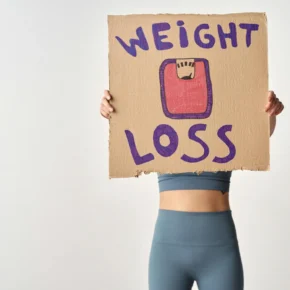Today I thought I’d put together a guide to the main running distances for anyone who’s looking to take that next step into getting started with running, or perhaps wants to enter their first race, or try for that distance for the very first time.
Running is such an exciting sport that can be done virtually anywhere with very limited equipment needed. That’s the beauty of it, there is so much you can accomplish and the barriers to start are virtually non-existent. You just put on a pair of trainers and get going!
Sometimes the thought of ‘where to start’ however can be daunting for a new starter. I know from my own experience I didn’t know what to focus on and sometimes felt overwhelmed. So in this blog post I thought I’d cover off the main running distances of 5km, 10km, Half Marathon and Full Marathon. I know there are additional distances such as 1 mile, 10 mile, ultra distances as well, however I’m going to ignore these for now and keep it simple.
5km Distance
The 5km is in some ways the perfect distance. It’s certainly the easiest to try out and repeat in training as it will take up less time than any of the other distances I’m going to cover off. That doesn’t mean it’s easy. You might feel fit enough to complete those 5000 metres, but it takes incredible fitness to get yourself a good pace and time without stopping.
The great thing about this distance is that you can time trial yourself against others through Parkrun. This is a local park meet-up that usually takes place every Saturday morning. You run the fastest 5K you can amongst others and receive a time and placing of where you finished that day. This allows you to be accountable to others but it’s also a lot of fun, with a good community spirit and doesn’t have to be taken too seriously, as there are runners at all levels that enter.
10km Distance
Once you get a little more experience it’s natural to want to progress to a longer distance. In this case the 10K is double the 5K distance but don’t think for a moment the time you ran your 5K is just doubled to get to the 10K mark. For this distance you have to account for a different pace entirely. You can get away with going all-out at 5K because the run can be over in 20-30 minutes, but unless you’re an elite runner you have to learn to adjust and slow down to complete the 10K because it’s a lot harder.
My advice in getting to the 10K distance is start at the 5K mark and set yourself a good foundation of fitness, then move on in time. There’s absolutely no rush! Tempo runs are a good addition to your running training where you run at a somewhat harder pace for a longer period of time without stopping. This gets your body used to running this pace over a 10 kilometre distance.
Half Marathon
This is 13.1 miles or 21.1 kilometres, so again pretty much double the distance of a 10K. This was actually the first race that I entered and it didn’t matter what time I got, because I just loved the distance!
There’s something really satisfying of being fit enough to complete the half marathon, especially when entering a race and collecting your medal at the end! Training for it can take around 3 months on average and your goal is to gradually build up to the distance over that period.
The aim is to basically run as slow as you possibly need to in order to achieve the distance i.e. 6 miles, 8 miles, 10 miles then 12 miles. Most half marathon training plans don’t even include the full 13.1 miles within a practice run. Don’t worry about your pace or average pace the first time, just focus on getting those miles covered.
I’ve always felt that running this distance is the most exciting race to enter and a great feeling of accomplishment at the end, no matter how experienced you end up getting. Not many people can say they’ve completed it, even if you see thousands on the day of the race, it is truly a wonderful accomplishment and something to build up to over time.
Full Marathon
This is the big one and one that many runners never get to complete. Which is absolutely ok! There’s nothing wrong with sticking to one of the previous distance runs that I’ve already talked about. But the full marathon of 26.2 miles or 42.2 kilometres is an incredible distance that truly tests you as a runner.
The training for it is a true commitment and you cannot just ‘wing it’ with the general fitness that you’ve built up over the time you’ve been running. You have to ensure your legs and body can physically move for that period of 4-5 hours, and this comes from long distance training over 12-16 weeks, which is why it’s a real commitment and takes up a lot of time, especially on days off and weekends.
Saying that, it is the most incredible feeling once you cross that finish line, and you’ll know that you belong to an elite group of people that can say they’ve ran one. In fact less than 1% of the world’s population have done so! It’s not something you have to do though, and many runners focus on the previous distances with the goal to improve their personal bests instead.
Whichever distance you decide to focus on, it’s important to be as consistent with your training as you can, as well as varying the types of runs you do to get ready for that distance. Be patient with yourself and enjoy the journey. It’s why running is such an incredible sport, because there’s always more to achieve!
Adam Warren




Leave a Reply